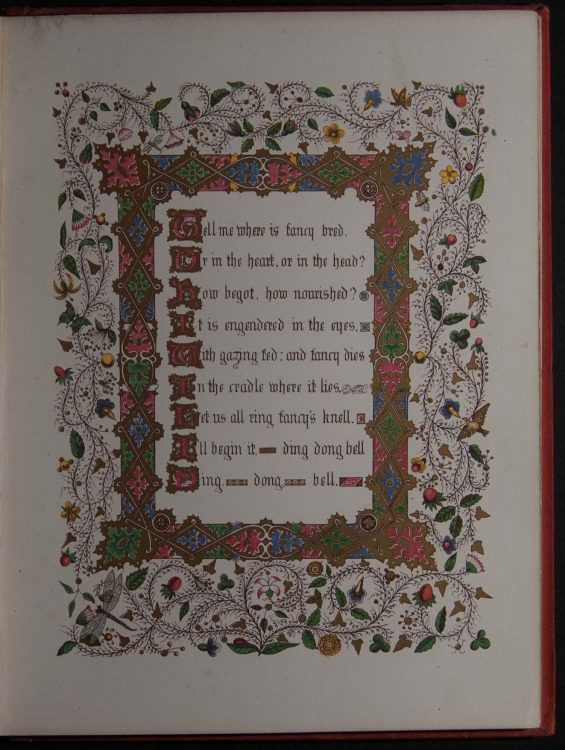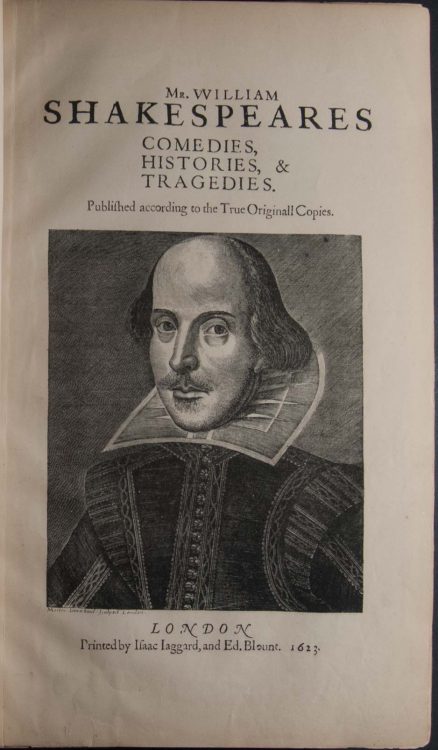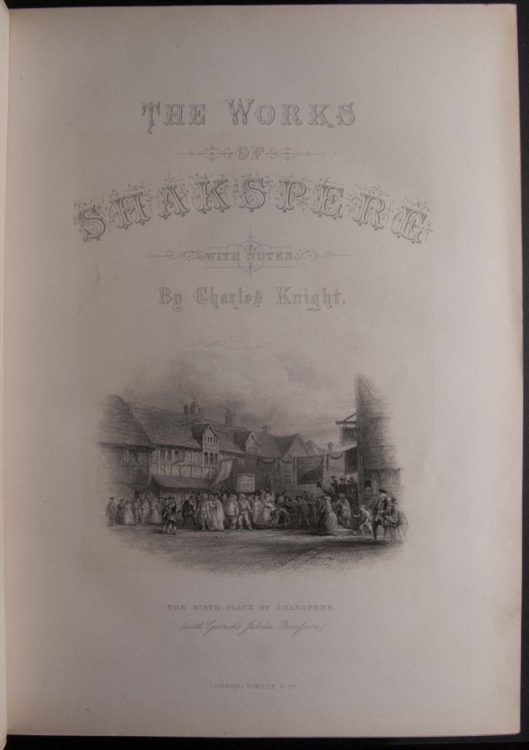William Shakespeare
Songs of Shakespeare. London: Day & Son, [circa 1860s].
This book paired selected songs from Shakespeare’s plays with printed illuminations designed by H. C. (Harriette Charlotte) Hoskyns (ca. 1829-1915).
William Shakespeare
Scenes from the Winter's Tale. London: Day and Son, [circa 1866.]
This book presented a pictorial retelling of the Winter’s Tale, with text, border, and illustration all integrated as a whole. The illustrations, which imitate the style of Greek vase painting, were produced by Henry Warren (1794-1879) and the accompanying illuminations were designed by Owen Jones (1809-1874).
William Shakespeare
The First Collected Edition of the Dramatic Works of William Shakespeare. A Reproduction in Exact Fac-Simile of the Famous First Folio, 1623, by the Newly-Discovered Process of Photo-Lithography. London: Day & Son, 1866.
Howard Staunton (1810-1874), a chess player and Shakespeare editor, was responsible for producing the first photographic facsimile of Shakespeare’s First Folio. The facsimile was issued serially in 16 parts between 1864 and 1866, with a single volume edition released upon the project’s completion. Although facsimile editions are quite common today, Staunton’s represented a unique achievement in book production and reproduction. For the first time ever, those who could not access an original copy of the First Folio had the opportunity to examine an exact likeness of the book. Prior to Staunton’s facsimile, in 1807, the printers Edward and Joseph Wright had issued a page-for-page reprint of the First Folio, for which they tried to reproduce, as best as they could, the actual type that had been used in the original. Prior to the creation of photography, this was, of course, the only possible way to imitate a previously printed edition of a book. Between 1862 and 1864, Lionel Booth produced a reprint of the First Folio that tried to reproduce the text of the First Folio, but using a modern typeface. (Booth’s edition did not sell well). In order to create Staunton’s facsimile, photographic plates were made of each page, which were then inked and transferred to lithographs for etching and printing. The reproduction was imperfect - in some sections, the text appears a bit faint, presumably due to the logistical challenges of working with the new photolithographic technology - but it still maintained an accurate likeness. Staunton’s facsimile was still an expensive book (a complete copy, at the time of publication, sold for 8 guineas, which would be somewhere in the realm of $900 by today’s standards), but it cost nothing near the £273 that a First Folio had sold for at the time (which would currently be comparable to about $30,000).
William Shakespeare
The Works of Shakspere. London: Virtue & Co., 1873.
Virtue & Company’s “Imperial edition” of Shakespeare, one of many luxury editions to follow the example started by Boydell, was originally issued to subscribers in 56 parts. The Imperial edition was spearheaded by Charles Knight (1791-1873), whose first edited text of Shakespeare had appeared between 1838 and 1841. Knight’s text was derived almost exclusively from the First Folio, on the assumption that it was as close as one could get to the author’s original manuscripts. Although he made some comparisons to the quarto editions, Knight regarded all of the subsequent folio editions as textually irrelevant, dismissing the possibility that the printers of the Second through Fourth Folios might have introduced any significant editorial corrections. Like Boydell’s Shakespeare, the Imperial edition featured engravings based on paintings by leading artists. However, the images presented in the Imperial edition were not original to this publication. Rather, they were engraved based on paintings that had been produced over the past thirty years.
William Shakespeare
The Works of Shakspere. London: Virtue & Co., 1873.






